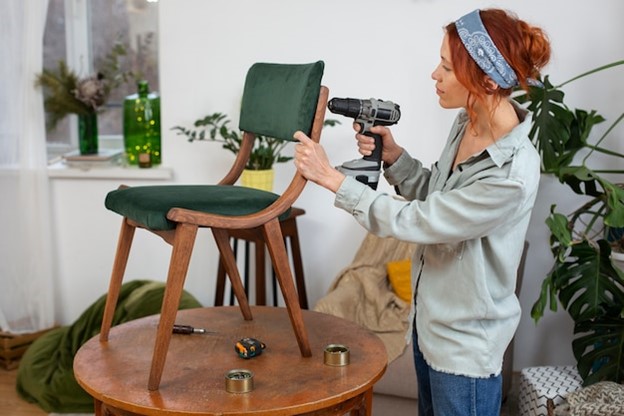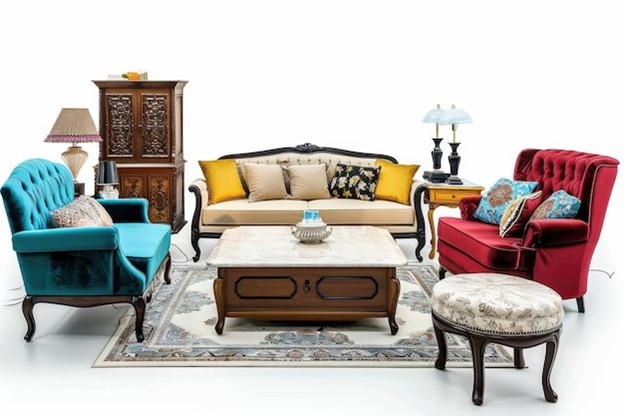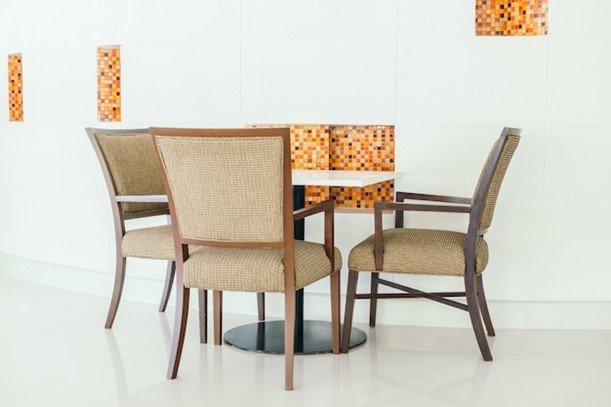Imagine stepping into a home that feels timeless yet fresh, where history and modernity coexist beautifully. This balance of old and new is the hallmark of a well-designed space that incorporates vintage furniture. Mixing vintage elements with contemporary design can create a unique and inviting home, much like the charm of eclectic apartment decor, that reflects your personal style.
If you’re intrigued by the charm of vintage furniture but unsure how to integrate it into your modern home, this comprehensive guide will show you how. From choosing the right pieces to achieving a harmonious blend, we’ll cover everything you need to know to make your home both stylish and functional.
Why Vintage Furniture?
Vintage furniture brings character, craftsmanship, and a sense of history to any space. Unlike mass-produced modern pieces, vintage items are often unique and made with a level of quality that stands the test of time. Incorporating these pieces into your home isn’t just about aesthetics; it’s also a sustainable choice that reduces waste and supports a circular economy.
What makes vintage pieces so special is their ability to tell a story. A vintage chair or sideboard isn’t just furniture; it’s a glimpse into a different era. When paired with modern design, these pieces can anchor a room and create a dynamic contrast that’s visually stunning.
Finding the Perfect Vintage Furniture
Before incorporating vintage pieces into your home, it’s important to know where to find quality items. Vintage furniture shops, flea markets, estate sales, and online marketplaces are great places to start. Whether you’re hunting for a mid-century modern armchair or a Victorian-era table, exploring these venues can yield some fantastic finds.
When shopping for vintage items, keep these tips in mind:
- Inspect the Quality: Vintage doesn’t mean broken. Look for pieces that are well-made and structurally sound. Pay attention to joints, upholstery, and overall sturdiness.
- Know Your Style: Whether you prefer art deco, mid-century modern, or rustic farmhouse, having a clear idea of your preferred aesthetic will make your search more focused.
- Be Patient: Finding the right piece takes time. Don’t settle for something that doesn’t fit your vision just because it’s available.
- Consider Restoration: Some vintage items may need a little love. Reupholstering a chair or refinishing a table can breathe new life into a piece.
Creating a Cohesive Look

One of the biggest challenges in incorporating vintage furniture into modern spaces is ensuring the overall design feels cohesive rather than chaotic. Here’s how to strike the right balance:
Start with a Neutral Base
A neutral color palette provides the perfect backdrop for vintage and modern pieces to coexist. Walls painted in shades like white, beige, or light gray allow the unique features of vintage furniture to shine without overwhelming the space. Neutral tones also make it easier to introduce pops of color through accessories or artwork.
Mix Textures and Materials
Combining different textures and materials can add depth and interest to your design. For example, pair a sleek glass coffee table with a vintage leather sofa, or place a modern metal lamp on an antique wooden desk. This interplay of smooth and rough, shiny and matte, creates a visually engaging environment.
Highlight Key Pieces
Not every piece in your home needs to be vintage. In fact, incorporating just a few standout vintage items can have a greater impact. Choose one or two focal pieces for each room, such as a vintage dining table or a retro credenza, and build the rest of the design around them.
Room-by-Room Ideas for Incorporating Vintage Furniture
Let’s explore how to integrate vintage furniture into different areas of your home while maintaining a modern aesthetic.
Living Room
The living room is an ideal space to showcase your favorite vintage pieces. Start with a vintage statement piece, like a tufted Chesterfield sofa or a mid-century modern coffee table. Pair these items with contemporary lighting and sleek side tables for balance.
Rugs can also play a significant role. Layering a vintage Persian rug with modern furnishings can create a cozy and eclectic vibe. Add a gallery wall featuring a mix of modern art and vintage frames to tie the look together.
Bedroom
A vintage bed frame or headboard can serve as the centerpiece of your bedroom. Complement it with modern bedding and minimalistic nightstands. To enhance the vintage charm, incorporate an antique vanity or a restored armoire for storage. Add texture with throw blankets and rugs in soft, natural fabrics.
Related Topic: Minimalist Décor: Tips For Creating a Minimalist Home
Dining Room
In the dining room, a vintage table can set the tone for the entire space. Whether it’s a farmhouse table with weathered wood or a sleek mid-century piece, pairing it with modern chairs creates an interesting juxtaposition. Consider using mismatched chairs for an added eclectic touch. Complete the look with a contemporary chandelier or pendant lighting.
Home Office
A vintage desk can bring character to your home office. Pair it with a modern ergonomic chair for comfort and style. Use vintage storage solutions, like an old filing cabinet or a bookshelf with brass details, to add charm without sacrificing functionality. To brighten the space, incorporate contemporary desk lamps or wall sconces.
The 80/20 Rule for Vintage and Modern Design

A helpful guideline when mixing vintage and modern elements is the 80/20 rule. This means 80% of your space should feature modern design, while 20% is dedicated to vintage items. This ratio ensures that the vintage pieces stand out as intentional focal points without overwhelming the overall aesthetic. For example, a modern sofa paired with a vintage coffee table and a few antique accessories strikes the perfect balance.
The Role of Accessories
Accessories play a crucial role in tying together vintage and modern elements. Items like throw pillows, vases, and wall art can bridge the gap between eras. For example, a modern couch adorned with patterned cushions in vintage fabrics creates a cohesive look. Likewise, vintage-look furniture accents, such as brass handles or carved wooden legs, can make modern pieces feel more timeless.
Related Topic: The Importance of Accessories in Home Decor
Embracing Sustainability
Choosing vintage furniture isn’t just about style; it’s also an eco-friendly choice. By reusing and repurposing old items, you reduce the demand for new production and minimize waste. Many vintage pieces are also made from high-quality materials that last longer than their modern counterparts, making them a smart investment for the future.
Conclusion
Incorporating vintage furniture into modern home design is a creative and rewarding process. By blending old and new elements, you can create a space that’s uniquely yours—a home that tells your story. Whether you’re drawn to the charm of a vintage furniture shop or the timeless appeal of a well-loved heirloom, the key is to experiment and have fun.
Remember, there are no strict rules when it comes to design. Let your personality shine through, and don’t be afraid to mix styles, textures, and periods. With the right approach, you can achieve a harmonious and inspiring home that stands the test of time.
FAQs
Vintage furniture refers to pieces that are at least 20-100 years old, reflecting the design and craftsmanship of a specific era. It often showcases unique styles, high-quality materials, and timeless appeal, making it a popular choice for collectors and home decorators.
Popular vintage furniture includes mid-century modern designs, such as sleek teak wood tables, Eames chairs, and credenzas. Art Deco pieces, with their bold geometric patterns, and antique farmhouse styles, featuring rustic charm, are also highly sought after for contemporary interiors.
A piece of furniture is considered vintage if it’s at least 20 years old, showcases the design characteristics of its era, and retains its original form. Authentic vintage items often feature high-quality craftsmanship, unique detailing, and a style that reflects the trends of the time.
To identify vintage furniture, look for markers like unique design elements, patina, or wear consistent with age. Check for labels, stamps, or maker’s marks that indicate the manufacturer and era. Research the style, materials, and construction techniques to verify its authenticity.
